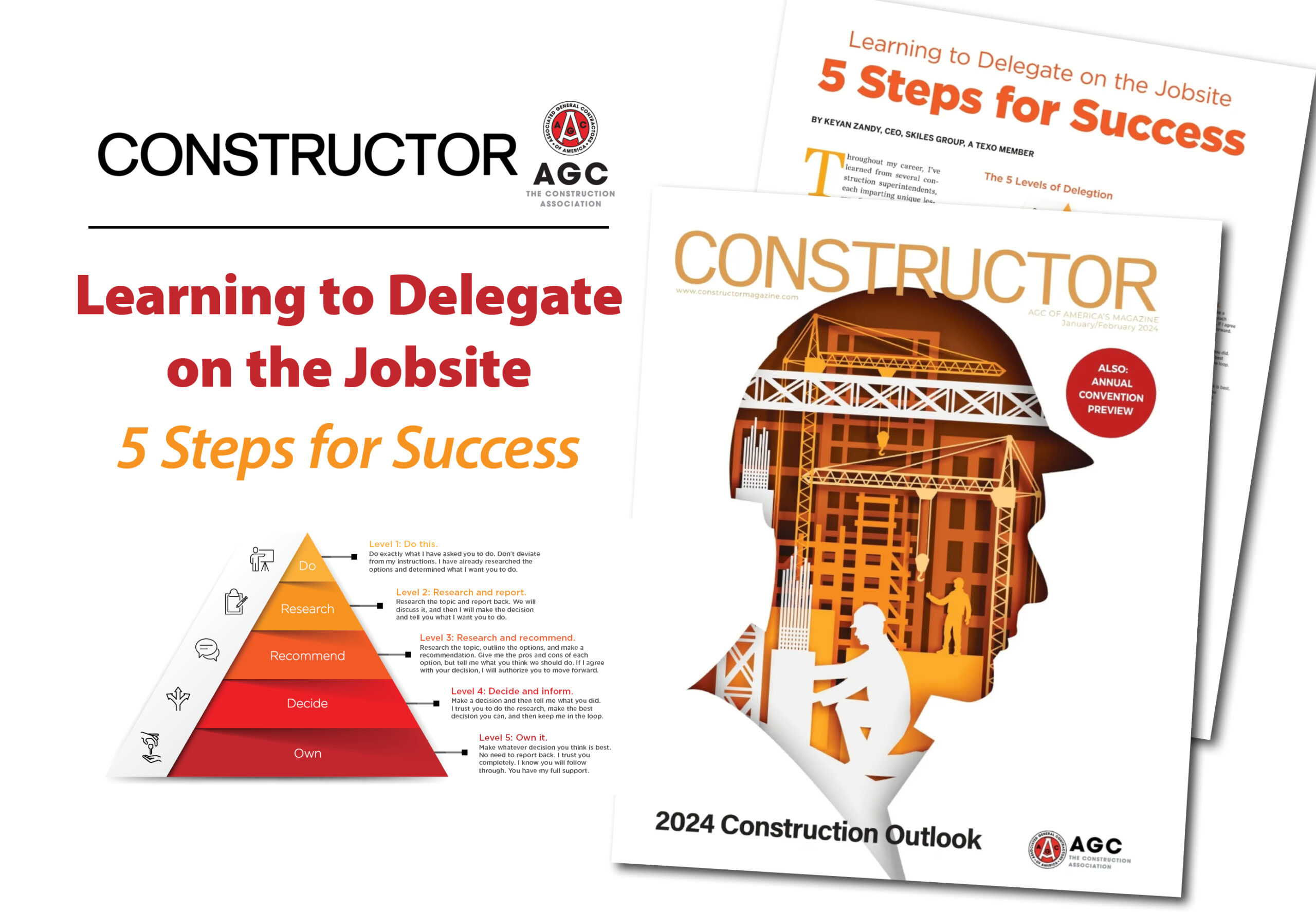Throughout my career, I’ve learned from several construction superintendents, each imparting unique lessons. One earned respect with his team by ensuring the trailer’s coffee pot was ready before he arrived each morning, while another valued the site’s security. And there was one whose trust I gradually gained by simply asking to join him during his early morning rounds—albeit under the condition that I remain silent, run safety meetings, handle daily reports, and capture progress photos. Over time, he warmed up to me, sharing invaluable insights as we walked the job’s progress. Reflecting on these experiences, I think the most valuable lesson was understanding the art of delegation.
Due to the high stakes involved, effective delegation in the field is complex. A colleague often says, “It takes just one ‘Oh, crap!’ to wipe away ten ‘Attaboys!'” which stresses how a single mistake can negate days of hard work. This reality can make field leaders hesitant to relinquish control. However, as project scopes expand, so do responsibilities. Scaling necessitates distributing these duties across the project team. Employing a structured delegation plan is crucial for field leaders who want to empower their teams and ensure the site runs smoothly, even in their absence.
Here’s a 5-level delegation strategy to set clear expectations:

Level 1: Directive Delegation
At this level, the task is clear-cut. You instruct a team member to perform a specific task per your guidelines. Ideally, an explanation to clarify why they made that choice accompanies this directive, allowing for a learning opportunity.
Example: “Contact Sunbelt Rentals and arrange a 125 PSI compressor rental for two weeks.”
Level 2: Research and Report
At this level, you delegate someone to research a topic, gather information, and present findings, enabling you to make the final decision. This level fosters learning while freeing up your time.
Example: “Conduct a take-off of fencing needs, contact three rental companies for quotes on a 6-foot-tall fence with two gates, and provide the bids for review.”
Level 3: Research and Recommend
Here, the delegate gathers information and proposes a course of action. This activity encourages decision-making skills while allowing your final approval.
Example: “Investigate flooring protection options for level two, compare costs and installation methods, and recommend the most suitable solution.”
Level 4: Decide and Inform
At this level, the delegate makes the decision, carries it out, and keeps you informed throughout the process. Trust is high, but staying in the loop is essential.
Example: “Attend the safety inspection, rectify identified issues with trade partners, and update me once all matters are resolved.”
Level 5: Ownership
This level involves complete ownership of the task by the delegate, who is trusted to handle it without constant reporting, knowing they have your support if necessary.
Example: “You are responsible for managing the dumpsters on this project. Research and secure the best prices and ensure timely emptying as required.”
Adopting this structured approach to delegation not only empowers your team but also streamlines operations. Delegating responsibilities encourages decision-making, clarifies expectations, and fosters a culture of accountability. The more empowered your teams are, the more you can focus on higher-level aspects, better ensuring your project’s success.
This article was written for Constructor Magazine’s Jan/Feb 2024 issue; you can read it here:
https://constuctorjanfeb24.mydigitalpublication.com/publication/?m=69328&i=811684&p=35&ver=html5




